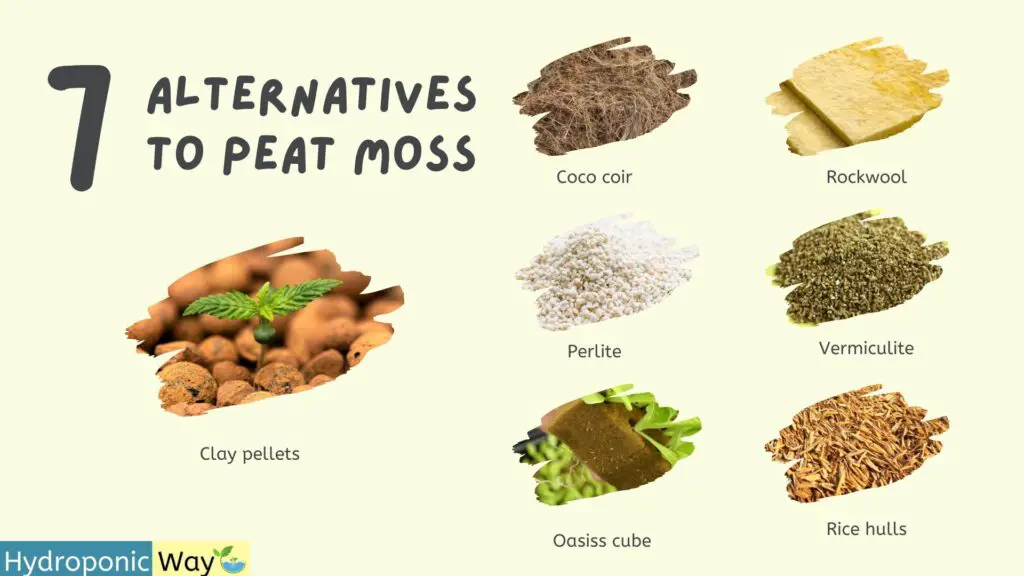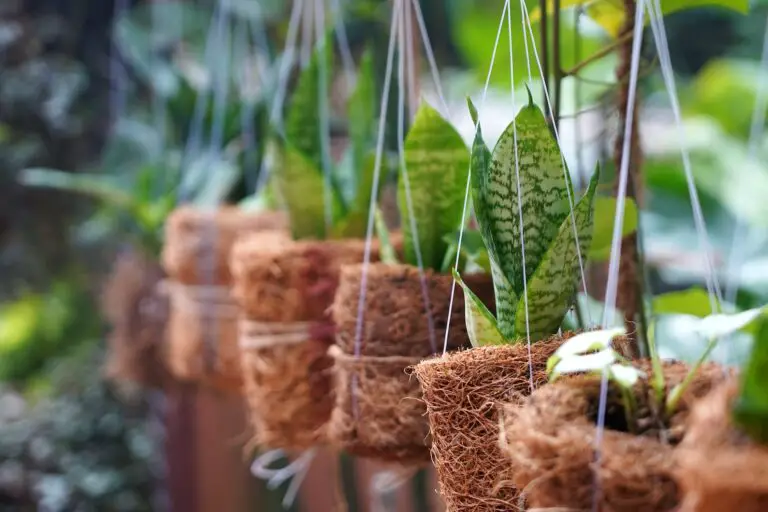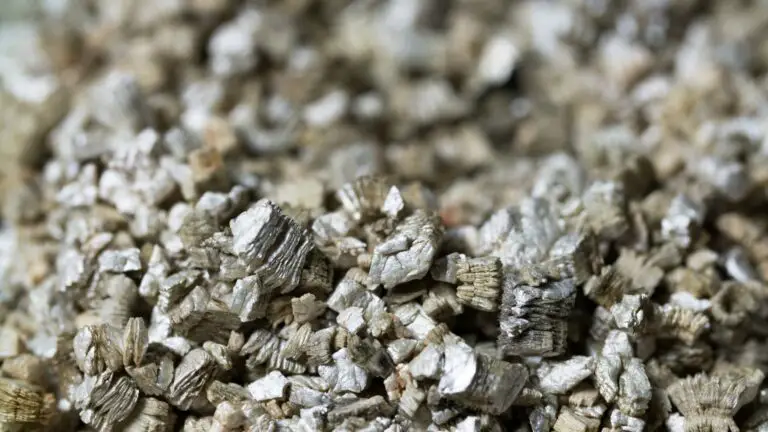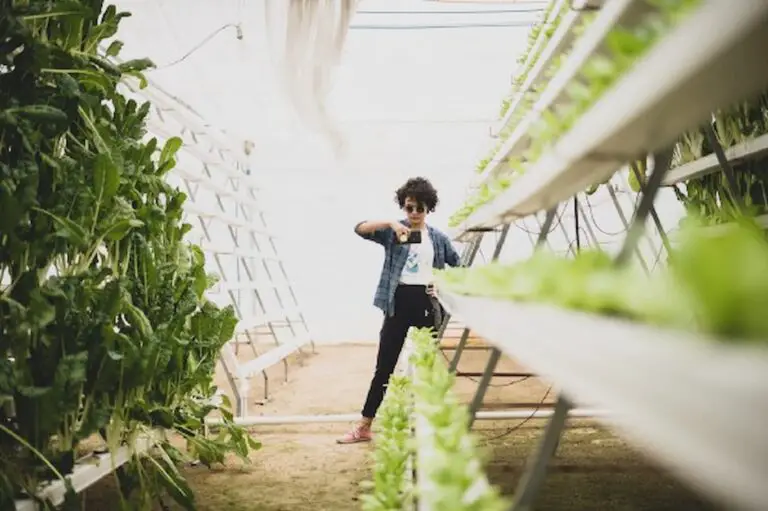Top 7 Alternatives to Peat Moss for Hydroponic Growing
Disclosure: Your purchases through our links may earn us a small commission, supporting our site’s ability to provide valuable information to our readers. Rest assured, it won’t impact your price. Thank you for your support.
When it comes to hydroponic growing, there are a few different mediums that you can use. One of the most popular is peat moss.
What Is Peat Moss?
Peat moss is a type of soil made up of partially decayed plant material. It is often used as a growing medium in hydroponic systems, as it retains water well and provides a good amount of nutrients to plants.
Peat moss can be found in many parts of the world, although the most abundant sources are in Canada, Michigan, Ireland, and Scotland.
But what happens if you can’t get your hands on any? Or maybe you’re looking for some alternatives to peat moss?
Let’s discuss the top alternatives for peat moss for hydroponic gardens or farms.
Why Need Alternatives for Peat Moss in Hydroponics?
There are a few different reasons you might need alternatives to peat moss for hydroponic growing.
- One reason is that peat moss can be difficult to find in some parts of the world.
- Another reason is that peat moss is not an environmentally friendly option. You can read, “Peat moss may be good for plants, but gardeners should avoid it. why?“.
What Are the Pros and Cons of Peat Moss as a Hydroponic Growing Medium?
Pros:
- Holds water well
- Provides a good amount of nutrients to plants
Cons:
- Difficult to find in some parts of the world
- Not an environmentally friendly option.
What Are the Best Alternatives to Peat Moss for Hydroponics?
1 . Coconut Coir
This is a by-product of the coconut industry, and it’s an environmentally friendly alternative to peat moss. Coconut coir is made from coconut husks. It’s a great hydroponic growing medium. The coco coir and coco peat are often confused with one another. To clear up any confusion, read the following post: Coco Peat vs Coco Coir: What’s the Difference?.
Pros:
- Environmentally friendly, sustainable,, and biodegradable material.
- Holds onto water well
- Providing well-aerated growing conditions
- Higher cation exchange capacity
- Lightweight
Cons:
- Can harbor diseases and pests
- More expensive than peat moss
- Not as widely available as peat moss.
2 . Rockwool
This is a man-made growing medium made from melted rocks and minerals. It’s often used in commercial hydroponic farms because it’s easy to control and doesn’t harbor diseases or pests. It’s easy to find and a great option if you’re looking for something that will hold onto moisture well.
Pros:
- Easy to control
- It doesn’t harbor diseases or pests
- Hold moisture well
- Retain water well
- High oxygen retention rate
- Lightweight
- Sterile medium
Cons:
- Can be expensive
- Difficult to find in stores
- It can irritate the the skin, eyes, and respiratory system.
- High water retention capacity may lead to root rot
- Difficult to cut and shape
Related:
How to Choose the Best Rockwool for Your Hydroponic?
How to Choose the Right Size of Rockwool for Hydroponic Growing System?
3 . Perlite
This is a type of volcanic glass that has been expanded and looks like white puffy balls. Perlite is a popular hydroponic growing medium because it’s lightweight and and sterile. It’s a great option if you’re looking for something that will provide drainage and aeration. With the different types of perlite, the water holding capacity differs. Check out this link to learn more.
Pros:
- Lightweight
- Sterile
- Provide drainage and aeration
- Hold moisture
- Inert medium
Cons:
- It can be challenging to find in stores
- Dusty can cause respiratory problems if inhaled.
- Difficult to clean up when used in hydroponics.
- fragile and can break easily
- No nutritional value for the plants
4 . Vermiculite
Vermiculite is made from expanded mica. This is a type of mineral that is often used as a soil amendment. It’s also used in hydroponics because it helps retain water and nutrients. It holds onto a water well, making it a great option for plants that need a lot of moisture. Vermiculite can be found in most garden centers or online.
Pros:
- It helps retain water and nutrients
- Retain moisture well
- It helps improve root growth
- Sterile
- Prevent root rot
Cons:
- Expensive
- Bacteria and fungus can thrive
- Unsustainable
Related: How Can Vermiculite Hydroponics Help You Grow Delicious, Nutritious Vegetables?
5 . Clay pellets
These are tiny pellets that are made from clay. They’re often used in hydroponics because they help aerate the roots and hold onto water well. You can find clay pellets in most garden centers or online.
Pros:
- Help aerate the roots
- Retain moisture
- Good drainage property
- Eco-friendly medium
Cons:
- Can cause problems due to high water holding capacity
- Problem with pumps and plumbing up to some extent
6 . Rice hulls
Rice hulls are the by-product of rice production, and they’re a great alternative to peat moss. They’re also used in hydroponics because they help aerate the roots and hold onto water well. They’re a great option if you’re looking for something environmentally friendly with impact mitigation practice and will provide drainage and aeration. You can find rice hulls in most garden centers or online.
Pros:
- Help aerate the roots
- Hold onto the water well
- Lightweight
- Highly absorbent
- Great source of nutrients
- Help prevent rot
- Sterile
- Less expensive
- Can use as mulch
Cons:
- There are some environmental impacts due to rice which can mitigate with proper practice
- Can harbor pests and diseases
Related: How to Set Up a Hydroponic Garden Using Rice Hulls?
7 . Oasis cubes
These are small cubes that are made from oasis material. They’re often used in hydroponics because they provide good drainage and aeration. You can find oasis cubes in most garden centers or online.
Pros:
- Provide good drainage and aeration
- Easy to use
- Hydrophilic medium
- Water retention of 30-40 times of weight
- Hold moisture and nutrient
Cons:
- Not suitable for plants that need more nutrients
- Can lose porosity and reduce oxygen levels over time
- Expensive

In Conclusion
As you can see, there are a few different alternatives to peat moss that you can use for hydroponic growing. Each one has its benefits and drawbacks.
No matter which growing medium you choose, do your research to ensure it is the best possible option for your plants!
Thank you for reading!
If you are looking to buy one or several growing mediums for your garden, click the below-shown links to buy a selected suitable one.




